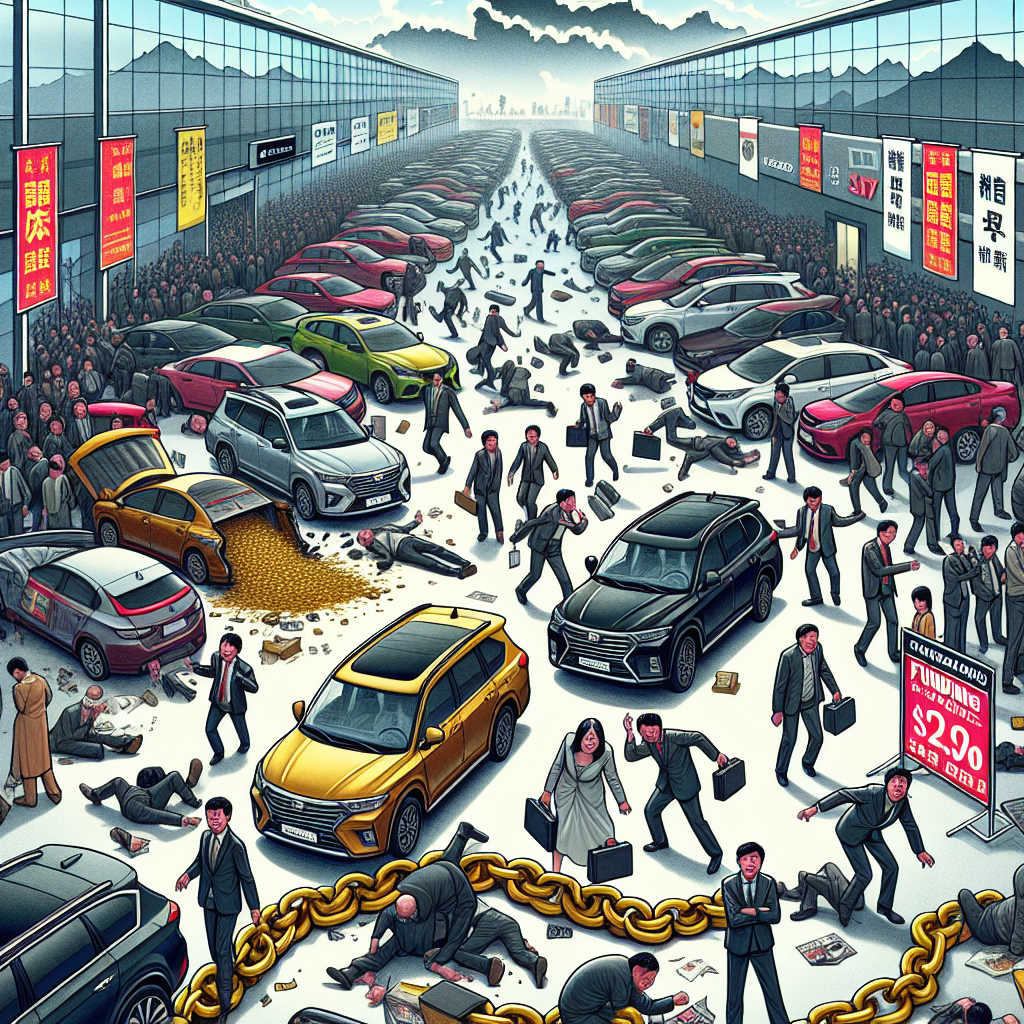Recent days have seen shockwaves reverberating through the automotive industry as the Jinan Gancheng, a key regional distributor of BYD in Shandong Province, experienced a funding chain rupture, exposing the grim survival predicament faced by dealerships amidst the intense price wars in the Chinese automotive market. This incident has highlighted the harsh reality that over eighty percent of dealerships are struggling in the quagmire of “price inversion”.
Jinan Gancheng Auto Trading Co., Ltd., known as “Jinan Gancheng”, first revealed its funding chain rupture in mid-April. Several consumers reported that their prepaid “Three Guarantees Service Package” could not be redeemed due to store closures, while some customers who had already made payments for their cars were unable to complete the registration process as their vehicle registration certificates were used as collateral for financing.
In a document released on April 17 titled “Three Guarantees Service Solution”, Jinan Gancheng attributed its financial troubles to the frequent adjustments in distributor policies by BYD in recent years, leading to a tight cash flow situation. Additionally, the collective default of automotive dealerships in the Shandong region and the tightening of bank credit have further obstructed financing channels.
On May 28, BYD responded by refuting the rumors of frequent policy adjustments and pointed out that Jinan Gancheng faced a tight funding chain due to its blindly expanding operations and high leveraged operations. Since the end of last year, some 4S stores under the group have been acquired by other local dealerships.
By the closing of the trading day, BYD’s A-shares fell by 2.56% and H-shares by 2.68%.
According to reports from mainland media, Gancheng Group joined the BYD dealership system in 2014 and owns more than 20 4S stores in Shandong with an annual revenue exceeding 3 billion yuan, previously ranking among the top five BYD distributors. Its flagship Jinan Gancheng store even claimed to be the “number one flagship store nationwide”, showing outstanding performance from 2018 until the outbreak of the pandemic.
Behind the Jinan Gancheng bankruptcy incident lies the systemic pressure brought on by the continued escalation of the “price war” in the Chinese automotive market.
On May 23, BYD announced limited-time subsidies for 22 intelligent driving models, such as a direct 53,000 yuan price reduction for the Dolphin 07 DM-i intelligent driving version, with the Qin PLUS DM-i intelligent driving version selling for only 63,800 yuan after subsidy.
Subsequently, brands like Changan in Chongqing, Leapmotor in Zhejiang, and Geely Auto followed suit with price cuts. Geely Star Shuttle’s starting price dropped to 59,800 yuan, while discounts of 60,000 to 80,000 yuan were offered for 2025 Cadillac XT4 models compared to the guidance price.
Facing fierce price competition, Geely’s chairman Li Shufu called for the abandonment of price wars, advocating for battles based on value, technology, and quality during a speech at a forum on May 28. He believed that a price war with no bottom line would eventually lead to practices like “cutting corners, fake manufacturing, and false sales”, and other non-compliant competitive behaviors.
This BYD Shandong distributor funding chain rupture incident sheds light on the challenges faced by the entire automotive circulation industry. The China Automobile Dealers Association’s “2024 National Automobile Dealers Survival Status Survey” shows that 84.4% of dealerships are experiencing price inversion, with 60.4% seeing a reversal rate exceeding 15%. The dealership profitability rate dropped to 39.3% in 2024. With the automotive circulation industry being capital-intensive and having a high proportion of private enterprises, the overall asset-liability ratio is generally around 80% to 90%, making it difficult to meet financing obligations due to poor profits.
Research by the China Federation of Industry and Commerce’s Automobile Dealers Chamber of Commerce indicates that banks have a slightly negative view towards the dealership industry, with issues of difficult financing and expensive borrowing becoming prominent, leading poorly managed dealerships to face loan withdrawals or disbursements.
By the end of 2024, the total number of 4S stores in China decreased to 32,878, down by 4,419 from the previous year, representing a 2.7% decline, marking the first negative growth since 2021. The price war in 2024 resulted in a cumulative retail loss of 177.6 billion yuan in the new car market from January to November.

